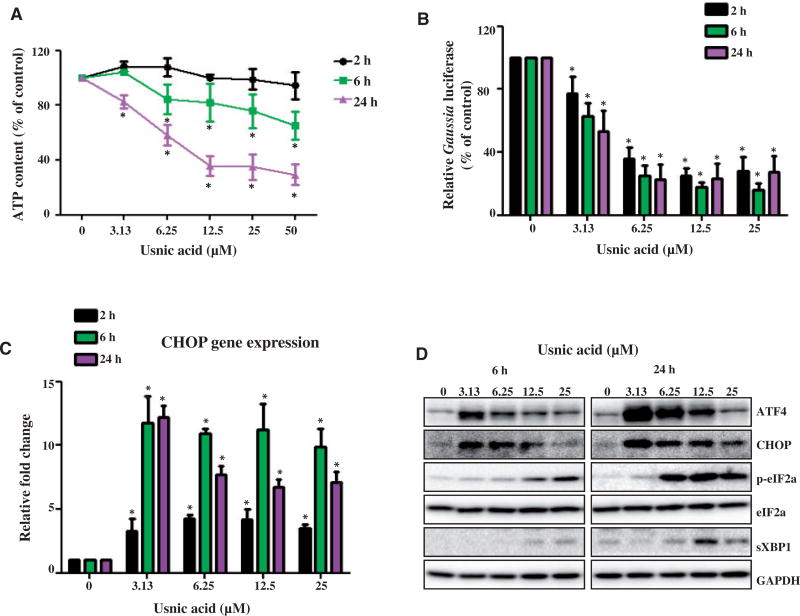FIG. 1.
Usnic acid causes a decrease in ATP level and triggers ER stress in HepG2 cells. A, HepG2 cells were exposed to increasing concentrations (3.13, 6.25, 12.5, 25, and 50 µM) of usnic acid, with DMSO as the vehicle control for 2, 6, and 24 h. The ATP content measured using CellTiter-Glo Luminescent Cell Viability Assays is expressed as % of control which is calculated by comparing the averaged luminescence of treated cells with that of control cells treated with DMSO alone. B, HepG2-Gluc-Fluc cells were treated with various concentrations of usnic acid for 2, 6, and 24 h. The activity of Gaussia luciferase was measured *P<0.05 as compared with the control for each time point. C, The gene expression level of CHOP was determined by qPCR. Values were mean6SD of three individual experiments *P<0.05 as compared with the control for each time point. D, Total cell lysates were isolated at 6 and 24h after usnic acid treatment. The expression level of ER stress related proteins including ATF-4, CHOP, phospho-eIF2α, eIF2α, spliced XBP1 was determined by Western blotting. GAPDH was used as internal control.

